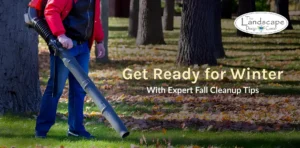
As we get closer to summer and the weather gets warmer, your landscape is going to have different needs to be addressed. Summer presents a unique list of tasks that have to be handled. You have to deal with grass and plants drying out, insect problems, and poison ivy, among other things. However, there are things you can do to keep summer from doing damage to your landscape. If you follow this summer landscaping checklist, you’ll be ready for anything summer has to throw at you.
Summer Landscaping Requires Watering and Mowing your Lawn
As mentioned previously, the weather gets a lot warmer in the summer. This results in your plants and grass drying out more quickly. For this reason, you need to water your lawn and plants at regular intervals. A rain sensor can also be helpful because rainfall helps keep your greenery hydrated as well. It also means you’ll know when to stop watering your plants. Overwatering is possible, and you don’t want to drown your plants.
You also want to ensure that you don’t cut your grass too short. If your grass is cut short, the roots become more stressed. This can cause dehydration and discoloration of your lawn.
Watch For Poison Ivy
If you don’t know how to recognize poison ivy, it is distinguishable by the three points of its leaves. Avoid touching this plant directly because it is dangerous. Instead, use gloves when working with poison ivy and then proceed with caution when pulling them out of your yard. You could also use different yard tools to help remove poison ivy to make the process a little easier.
Make Fertilizing and Pruning Part of Your Landscaping Routine
You should make fertilizing and pruning a part of your summer landscaping routine. Fertilizer should be applied roughly once per month during the summer. This keeps them healthy throughout the season. Avoid fertilizing dry soil. The best thing to do is to fertilize after you’ve had a rainstorm. Once you’ve applied your fertilizer, give your plants a healthy helping of water.
After that, think about doing some pruning for your trees and shrubs. Just don’t go overboard, as you shouldn’t remove anything above 15% of any tree’s leaves or branches. You should mainly focus on getting rid of dying growths.
The Landscape Design Center Is Here To Serve You
At the Landscape Design Center, the client is always our number one priority. We are committed to creating, improving, and maintaining the environment – an environment in which our clients live, work and play. We work with a variety of electric companies in the area to make sure your lights are addressed properly. Be sure to follow us on Facebook, Twitter, Linkedin, Pinterest, and YouTube to stay up-to-date on all of our latest news.



